As many of you have noticed I am completely and utterly fascinated by mountain lions, pumas, cougars, catamounts, or what ever you like to call them (did the webpage url and logo give that away???). It has always been my fascination getting pictures of them and seeing them in the wild. Though i have been able to get images, I have never seen one in nature (how is that possible you ask — camera traps!).
As anyone with any obsession, I can’t get enough information about them. Absolutely everything interests me about them including home range size, territoriality, density, prey species, den sites, when cubs leave their mother’s home range, and the list just keeps going on. I am telling you this as a forewarning for future posts under the Project Puma heading that will have anything and everything to do with mountain lions whether that is information or pictures just in case there is someone else as interested in this beautiful cat as I am.
This post is also supposed to serve as an introduction to the cat(s) of the area I camera trap in Aptos near Santa Cruz in the Monterey Bay area. As of right now there are two camera traps out there and I have gotten mountain lion pictures on three different occasions. I am not completely sure whether it is the same cat or different cats so I figured I’d ask you guys. Here are the three pictures followed by close-ups in the same order.
Is it all the same cat, I really don’t know. In other cat species researchers use the spotting pattern which is unique to each cat to identify them. For Puma concolor (the scientific name of the mountain lion meaning cat of one color) this isn’t really an option. What I was looking at is the black marking around the mouth, the black whisker markings, and the shape of the ears. Nothing leads me to say that its the same cat or different cats (in the second image, that is a tick in the ear, sadly not something to identify the cat by) — do you see something I am not? One thing for sure is that the second cat is much bulkier than the first, but the images were also captured months apart.
An interesting thing to note are the few faint slightly darker spots on the back leg of the first image, which could give us some clues of its age. Puma kittens are completely spotted loosing these marks as they become older. By ten months, the markings are difficult to see except on the hindquarters. The eyes turn from a light blue as kittens to yellow brown as adults (this change is complete by sixteen months). Young pumas are independent around 15 months (with a range of 10 to 18 months) leaving their mother’s territory and searching for their own. Based on the fact that I had not captured an image of a puma before this individual (for a period of 8 months) and its morphology it leads me to believe that this must be a juvenile looking for its own territory. If the second and third image are of the same cat, then I am glad to know its doing well in its new home!

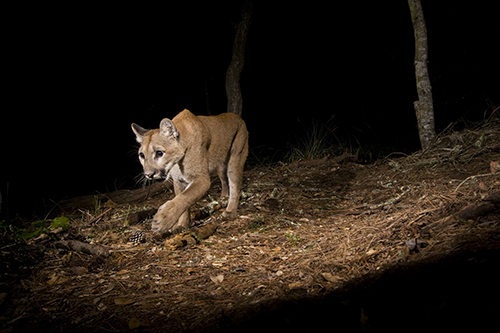
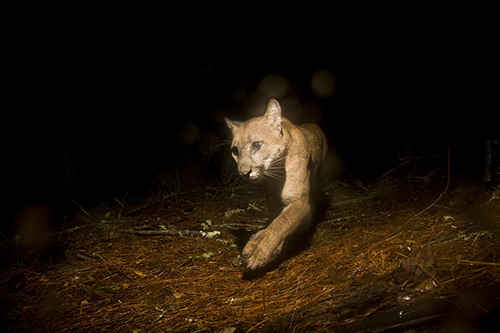
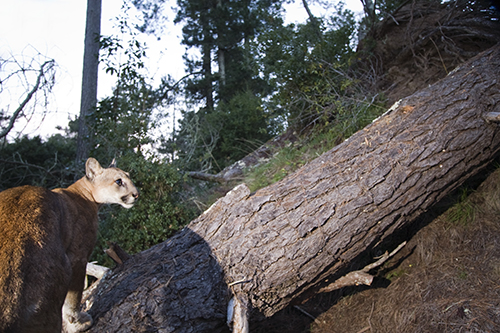
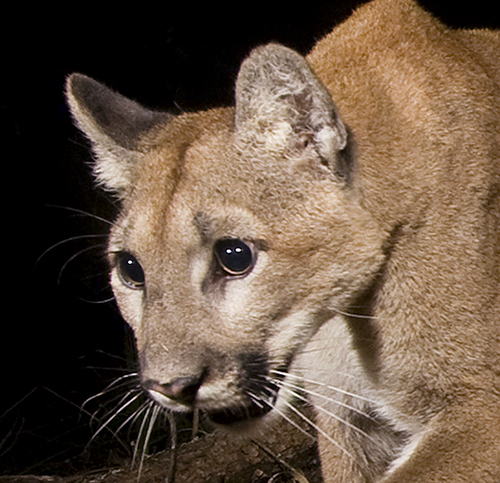
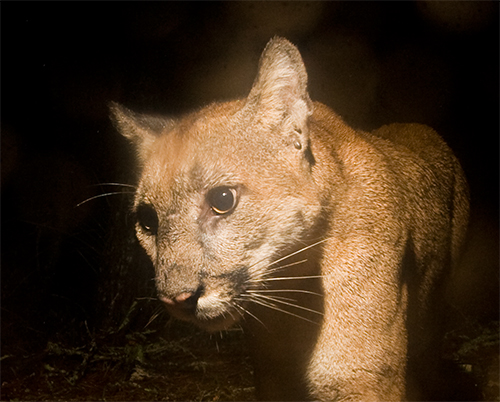
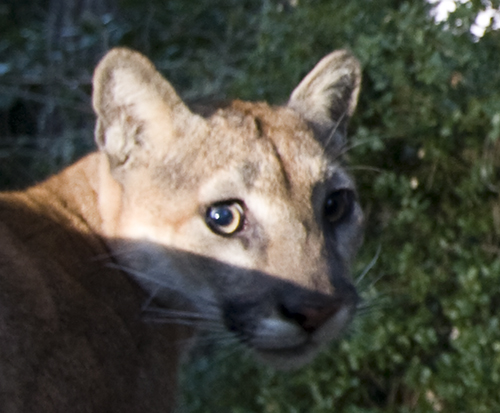
To me it looks like #1 and #3 have very similar ear shapes where as #2 seems to have taller pointier ears. May be angle but it might be something.
Hello
Iknow you mentioned that you are using DSLR to photograph mtn lion, I was wondering how to manage power to operate those camera, I have been testing my DSLR and cannot get more than 9 hour on with a battery pack. Would you be able to let me know how to solve this.
Denis
Hey Denis,
the problem you have right now is that your camera is activated at all times. It needs to be in ‘sleep’ mode or standby mode. Your triggering device is responsible for allowing your camera to go into that mode. Switchboards are an option, so are customized triggering devices. As a heads up, Chris Wemmer is about to teach a camera trapping workshop in the Sierras: http://cameratrapcodger.blogspot.com/p/2012-camera-trapping-workshop.html